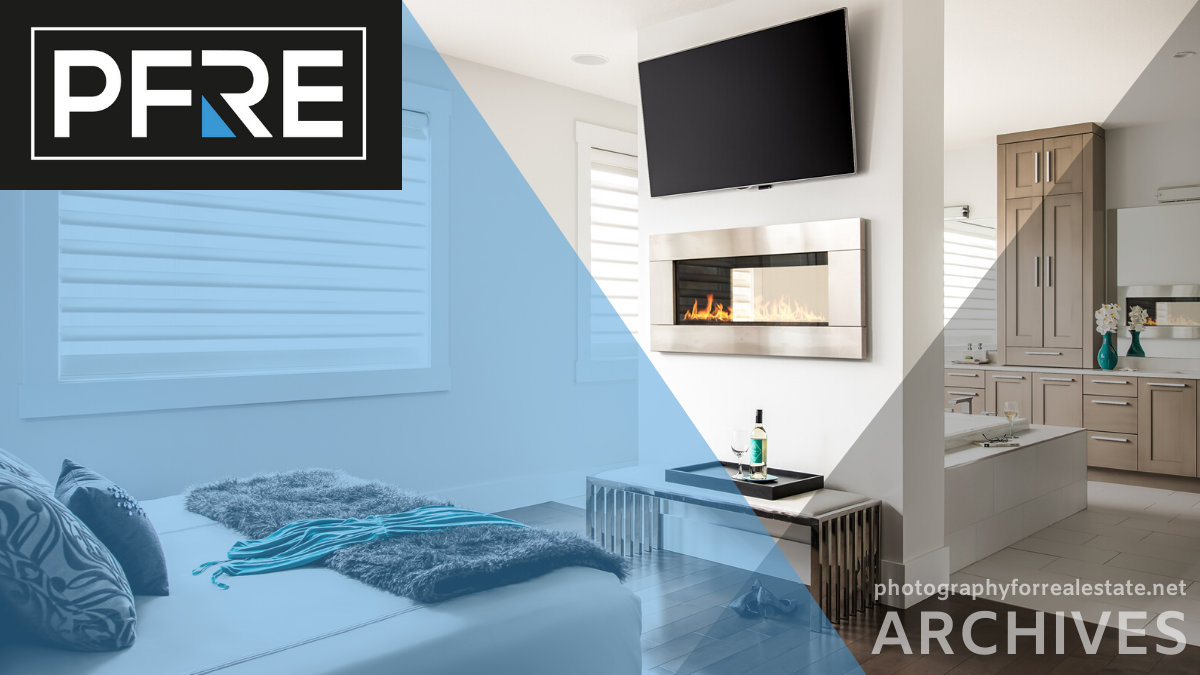
As an Amazon Associate we earn from qualifying purchases.
When shooting interiors, I frequently run into problems associated with color contamination. Whether it's a strong color cast, glare on a glossy or reflective surface, or even stained or blemished flooring or furnishings, there's one trick I use all the time in my workflow to help me correct those issues: Color Blend Mode.
The beauty of using color blend mode in Photoshop, is that you can retain all of the texture and luminance of the area you are working on. In this short video, I go through an example of a shot in a home with a wooden accent wall. Part of the accent wall has some discoloration of the wood and I used color blend mode to correct the problem area.
This method can be used in a lot of different applications, from repairing glare on hardwood floors, to removing a stain on a sofa. Any time you have a textured surface on which you need to "paint" a color, this is the way to do it.
Do you use a method like this in your workflow? If so, when? Let me know in the comments!
Note: Garey's tutorial, Mastering Real Estate Photography, is on sale through Friday, April 5th. Get $30 off with coupon code SPRING19

Simple but fantastic procedure! Thanks Gary. Have a great day.
Thank you, Gary. Great tip and very clear explanation.
I've used this method for a couple of years. . .I forget where I first heard about it. . .but it works beautifully as you mentioned. I use it mostly when blending an ambient layer in luminosity mode with a flash layer. Many times there is discoloration with brushing out shadows, shine on cabinets and hardwood floors or hotspots from the flash. . I just take out the color picker and get the desired color. . .switch to color mode and "boom". . .like buttah!!. . .the amazing thing, as you mentioned, is the laying down of color while not disturbing the surface texture. . . magic!!!
Nice job, thank you.
Tried to order your course but your site will not allow it.
Desmond, Larry, Kevin, and Kent, glad you found it helpful! I use this all the time.
Kent, I sent you an email to see if I can help you complete your order for the tutorial. Thanks!
Where is the tutorial, all I saw was an ad selling a tutorial series. Did I miss it?
It appears that I did miss it. Next time don't stick it right in front of my face. Lucky it wasn't a snake.
The video presented the method well, with clear easy to follow steps. I'm not real positive on using this to cover up a material flaw in the house. As an improvement feedback, I would suggest using this on a pool or lawn. But in general, the video was good and a good length.
Also, as a preventative measure, that is why I wear a black shirt and black pants. When I am reflected in windows or even microwave doors, it is far easier to remove various shades of gray than the color contamination introduced by a plaid - or even solid color - shirt.
Thanks Garey! Not just a helpful tutorial, but really well produced. Love it.
I too have been using this technique for years, and it's one of my favorite and most often used tricks. Was great to see someone else's take on the process.
Two little shortcuts I found to speed up the process are to first create an Action in photoshop to create the new layer and change the blending mode. I know it seems trivial, but doing this a half dozen times a day, which then comes to a few hundred times a years, it really makes a difference. Especially when digging through the blend mode mini-pull down menu.
Second tip is to use the Magic Wand (not the quick selection tool!) when masking the area instead of the pen tool. Keep the Sample Size and Tolerance (I start with 5 by 5 and 22) gives you good control. Then use Shift to expand the selection out in increments. Not only is it quicker that the pen tool, but you also get an organic feathering of the selection as it creeps into the surrounding colors. Using the eye dropper just outside the selection area also keeps the transitions less noticeable. Dropping the opacity at the end as you recommend then smooths everything out even more.
Again, great video. Thanks!
That's a handy technique. But I question whether this is appropriate for photographing listings. Blue sky replacement is fine, because the sky will be blue again, someday. But that stained paneling will look flawed until it's repaired or replaced. This is a trivial issue, but it leans towards misrepresentation of the property, which the Realtors are officially taught not to do.